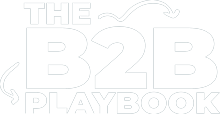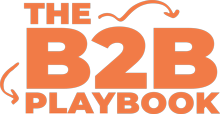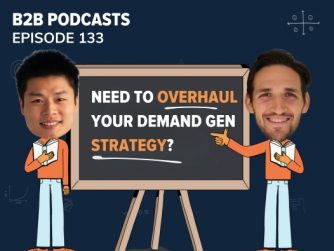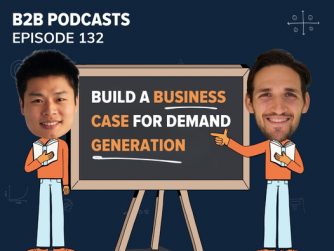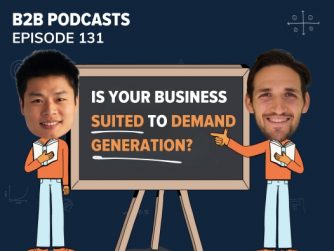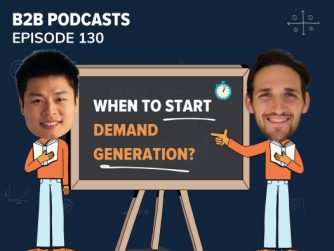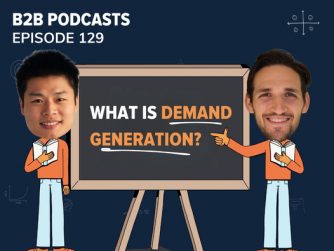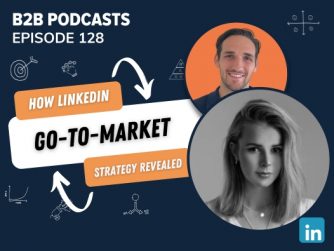This is a guest post from Customer Research Expert Ryan Gibson, Founder of Content Lift.
Talking To Your Customers Is Bad Advice. Here’s The Number One Mistake People Make
“Just talk to your customers”.
It’s almost cliche to hear it at this point.
The advice is saturated across social media.
But it’s actually bad advice.
And all customer research needs one vital thing to succeed. It needs an objective.
The way that B2B professionals describe the idea of talking to customers, it’s suggested you’re having friendly chat. Or that the goal is getting some opinions or hot takes about our product or service.
Here’s the thing. If that’s your approach you are going to waste your time and your customer’s time. Even worse, you won’t actually have any insights you can use to help make informed decisions about your business.
A Reason To Talk in the First Place
A friendly chat is not your objective. Talking with or interviewing customers should feel like a friendly conversation; much in the same way a sales conversation or customer success conversation should aim to feel the same way.
Yet at the end of the day, talking to customers to understand more about how to create or improve a go-to-market strategy is actually research. It even has a fancy name, “primary customer research”. A method for collecting data qualitative data, straight from the people who buy your product or service.
And all customer research needs one vital thing to succeed. It needs an objective. There are a few reasons for this.
It Keeps you Focused
The list of things you can discuss with a customer is endless. Yet you likely only have 30, maybe 45 minutes of their time, and every minute counts in this environment. You need to be laser-focused on what to speak about and what NOT to speak about.
For example, you can easily spend the entire conversation talking about the type of content your ideal buyers consume for evaluating products or services similar to yours, even though there are many other things that go into the typical B2B buying journey.
This is counterintuitive for most businesses. They often want to pack everything and the kitchen sink into interviews. That’s a mistake though as strong insights that are valuable for shaping your marketing and sales strategies come from the specifics of discussion, not generalities.
It Keeps Customers Focused
Humans have all sorts of habits when they are responding to questions. They can talk in circles. They go off on tangents. They jump around in time. They skip details. They tell you things they think are important. Interviewing a person is not a linear process, as people can go off-topic very easily.
A research objective helps you guide the process in real-time. Now that doesn’t mean you should shut down someone who is providing incredible insights. If something is valuable and you believe it’s worth digging into more, feel free to go for it. But those moments are few and far between.
A research objective helps you keep the discussion on track while keeping control of the environment.
It Helps you Focus Your Questions
There are two common mistakes I see people make when it comes to drafting questions. The first is they have no questions and just wing it. Second, they have an endless list of questions that are all over the place. Neither approach will help you archive the outcomes you want.
Everything you ask and every topic you cover in your discussion should be grounded in the research objective that you create. This is how I structure my list of questions:
Main Research Objective
- Topic One
- ——> Question One
- ——> Question Two
- ——> Question Three
- Topic Two
- ——> Question One
- ——> Question Two
- ——> Question Three
It’s a very simple and straightforward approach, but I find this is the best way to list questions, as you can see where you are in an interview and ensure you are writing questions that are specific to what is most important to understand.
How to Set A Research Objective
My process for setting a research objective is really a three-part equation.
(What I want to learn)
+
(Who I want to learn from)
+
(In order to do/understand X)
What I want to learn can be influenced by a wide range of things. But typically I like to review annual operating plans, quarterly reviews, OKRs or KPIs and look for what’s not working. And then determine what knowledge we need to help try and solve the issue.
Who I want to learn from stems from what I want to learn. If I want to understand why I’m losing deals, I may want to talk to prospects who didn’t buy. If I want to understand any new use cases or buying triggers, I may want to speak with a customer who recently closed.
Finally, I want to touch on the actions that will take place with the collected insights, so it helps me focus the questions and conversation. Here’s an example from my DIY Guide: How to Run Customer Interviews that Don’t Suck:
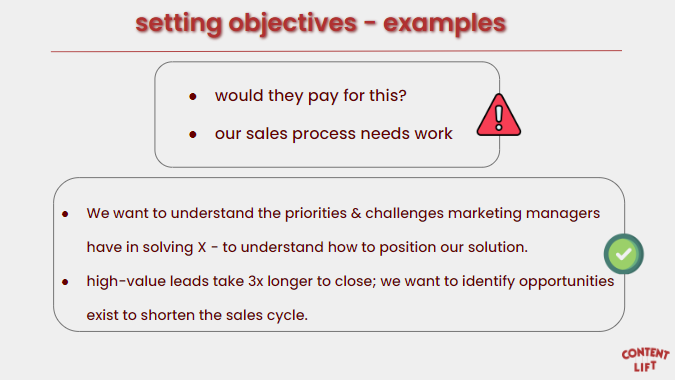
In the end, setting yourself up for success BEFORE you speak to a customer is crucial. All these steps ensure you are zeroing in on things that matter. And this is important after the interviews as well, when you have to make sense of all the data. The more similar your discussions, the more statistically relevant the data will be.
Without this step of setting an objective, you certainly will be “talking to customers” but you won’t learn anything that will help the business.
We had Ryan on The B2B Playbook Podcast to share his top tips for conducting interviews. Tune in below!
